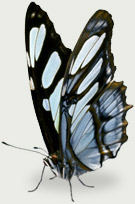
Butterfly gardening
Posted in Healthy Home & Garden on July 29, 2012. Last modified on April 30, 2019. Read disclaimer.
Gardening is a wonderful way to get heart-healthy exercise while relieving stress -- and butterflies are a welcome addition to any garden. It is estimated that there are more than 700 species of butterflies in North America, and probably more than 170 in the Carolinas. These "flying flowers" add color, activity and joy to even the smallest garden area. The following tips should help you attract them into you own landscape.
How attract butterflies to your yard and garden
A butterfly's habitat needs will change with each of its life stages: 1) host plants for laying their eggs and chrysalises, 2) food sources for caterpillars, and 3) nectaring flowers for adults. In general, however, the following considerations are important for providing a complete butterfly habitat:
1. Sunlight
Butterflies are cold-blooded and need heat from sunlight to warm them, especially in the morning. Select a site with at least a half day of sun. Basking stones, boards or flat rocks for sunning are also appreciated. Most of the flowers that butterflies visit bloom best in full sun.
2. Nectar plants
Butterflies feed on the nectar of certain types of flowers. Plants with large clusters of small flowers are preferred because the butterfly can easily walk from flower to flower, sipping nectar. Fragrant and brightly colored flowers are also favored.
3. Large groupings
A large group of one type of flower will be more easily spotted by butterflies and will hold their attention rather than scattered plants.
4. Continuous bloom
Select enough different species or varieties of flowers to ensure something will be in bloom from spring through fall. The variety attracts more species of butterflies and keeps them around the reliable food supply.
5. Larval food
The larvae, or caterpillars, of butterflies feed on specific plants (many of which are listed below under Larva Host Plants). The caterpillars of Eastern Black Swallowtail feed on plants in the carrot family parsley, dill, carrot. Monarch larvae feed on members of the milkweed family.
6. Water
Just like other animals, butterflies need water too. But a birdbath is too deep for butterflies since they cannot drink from open water. Butterflies prefer to drink from damp areas such as shallow pools, mud puddles or wet sand.
7. Avoid pesticides
Do not use insecticides in or near your butterfly garden. Soaps and oils may be used to control small insects such as aphids and spider mites as long as there are no butterfly eggs or small caterpillars on the plants.
Low Prices on Amazon's
Top 100 Best Selling*
BUTTERFLY SUPPLIES
(*Top 100 updated hourly)
Flowers that attract butterflies
Perennials
Allium (Allium spp.)Bee Balm (Monarda spp.)
Black-eyed Susan (Rudbeckia spp.)
Blazing Star (Uatris spp.)
Butterfly Weed (Asclepias tuberose)
Chives
Coneflower (Echinacea purpurea)
Coreopsis (Coreopsis spp.)
Daisies (Chrysanthemum spp.)
Daylily
Goldenrod (Solidago spp.)
Ironweed (Vernonia spp.)
Joe-Pye Weed (Eupatorium purpureum)
Lavender (Lavandula angustifolia)
Milkweed (Asclepias spp.)
New England Aster (Aster novae-angliae)
Phlox (Phlox spp.)
Queen Anne's Lace (Oaucus carota)
Salvia (Salvia spp.)
Sedum (Sedum spp.)
Sweet William (Dianthus spp.)
Yarrow (Achillea spp.)
Annuals
Annual Butterfly WeedCosmos
Hyssop
Impatiens
Lantana
Marigold, French
Mexican Sunflower
Pentas
Petunia
Scarlet Sage
Verbena
Vinca (Madagascar periwinkle)
Zinnia
Shrubs
AbeliaAzalea
Blackberry
Blue Mist Shrub
Butterfly Bush
Button Bush
Hibiscus
Lilac
Mock Orange
Spirea
Viburnum
Wisteria
Larva Host Plants
AsterButterfly-weed
Clover
Dill
Fennel
Mallow
Milkweed
Thistle
Nettle
Parsley
Queen Anne's Lace
Violet
Passionflower
Honeysuckle
Cherry
Hackberry
Pawpaw
Sassafras
Spicebush
Poplar

Additional Information is available from:
Carolina Butterfly Society, 4209 Bramlet Place, Greensboro, NC 27407
North American Butterfly Association
Monarch Watch
Sources:
North Carolina Cooperative Extension, Tips for Attracting Butterflies
 How being in love can effect our health
How being in love can effect our health How to cut onions without crying
How to cut onions without crying Hidden toxins in our homes and schools
Hidden toxins in our homes and schools Strategy for success with New Years resolutions
Strategy for success with New Years resolutions Tips for properly freezing foods
Tips for properly freezing foods Importance of strength training for seniors
Importance of strength training for seniors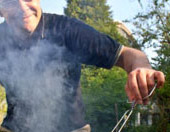 BBQ health and safety tips
BBQ health and safety tips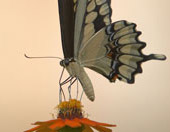 Attracting butterflies to your garden
Attracting butterflies to your garden Teaching values to our kids
Teaching values to our kids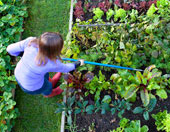 Guide to beginning a vegetable garden
Guide to beginning a vegetable garden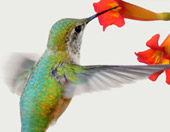 Attracting birds and hummingbirds
Attracting birds and hummingbirds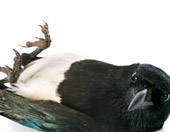 How to prevent birds from flying into glass windows
How to prevent birds from flying into glass windows When to take a child to the hospital
When to take a child to the hospital